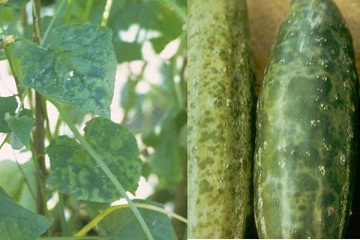IPB Student Utilized Seaweed Extracts Against Cucumber mosaic virus (CMV) in Vegetable Crops

"Seaweed" is the common name for countless species of marine plants and algae that grow in the ocean as well as in rivers, lakes, and other water bodies. Seaweed is known to have many benefits such as food, cosmetics, industry, health, even renewable energy sources. Seaweed is chock-full of vitamins, minerals, and fiber, and can be tasty. Many seaweeds contain anti-inflammatory and anti-microbial agents. Their known medicinal effects have been legion for thousands of years. These versatile marine plants and algae have also contributed to economic growth. Among their many uses in manufacturing, they are effective binding agents (emulsifiers) in such commercial goods as toothpaste and fruit jelly, and popular softeners (emollients) in organic cosmetics and skin-care products. Research on the benefits of seaweed continues to grow and begin to be applied to various fields, one of which is agronomy.
In addition to a number of benefits above, it turns out seaweed extract has reduced disease severity and incidence of Cucumber mosaic virus. It considers the most important viral pathogen affecting the production of vegetable crops all over the world. The virus is first discovered in cucumber plants and is able to attack other plants such as melons, chili, nuts, celery, tomatoes, carrots, spinach, sugar cane, and some ornamental plants. CMV will cause the leaves and fruits to have yellow spots such as mosaic, thereby decreasing the productivity and selling value of the commodity.
By joining the Student Creativity Program (PKM), the final semester student of the Department of Marine Science and Technology (ITK), of the Faculty of Fisheries and Marine Sciences of Bogor Agricultural University (FPIK IPB), cohort 50, namely Satria Yukiadi Santoso, carried out his research program on the benefits of seaweed to prevent the disease of the plant.
Under the supervision of Dr. Mujizat Kawaroe, and Beginer Subhan, S.Pi, M. Si, Satria extracted seven types of seaweed with methanol solvent. CMV symptoms were suppressed in treated plants, then the plant was infected with a virus mosaic cucumber. The treated plants after virus inoculation did not exhibit any yellow spots resulting from virus attacks. In addition to visual observations, the presence of virus in the leaves is also observed.
The results showed that the virus was still remain in leaves treated with seaweed, but was unable to cause an infection characterized by the absence of yellow spots on the leaves. It is recommended the use of seaweed extract on the target plants as to reduce the intensity of CMV attack, so it will protect our plants productivity and maintain the quality of our agricultural products with higher selling prices. (Wied)



